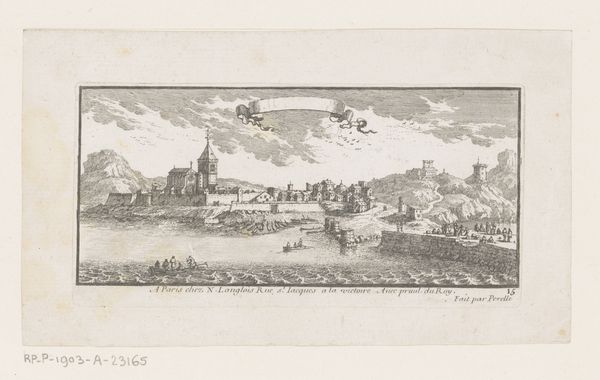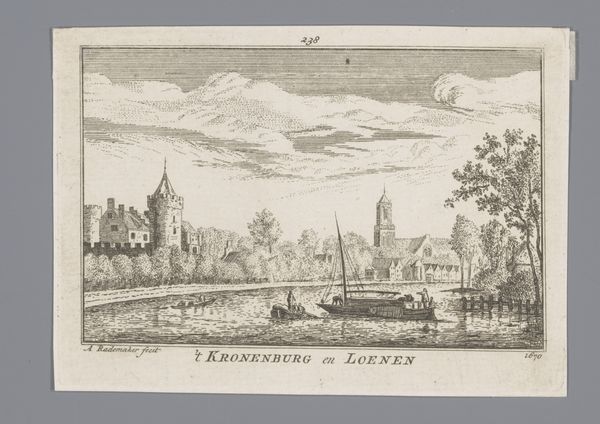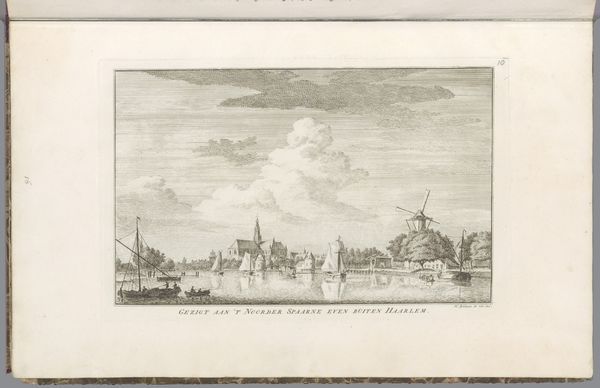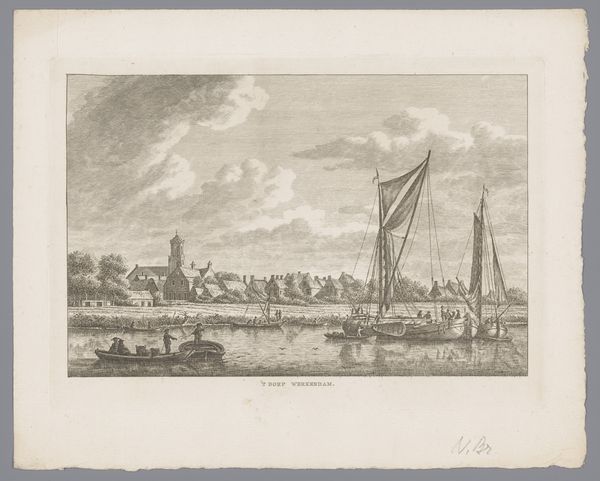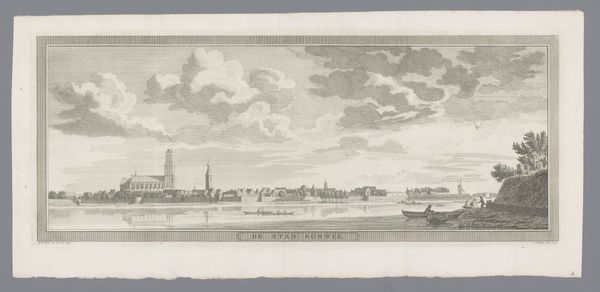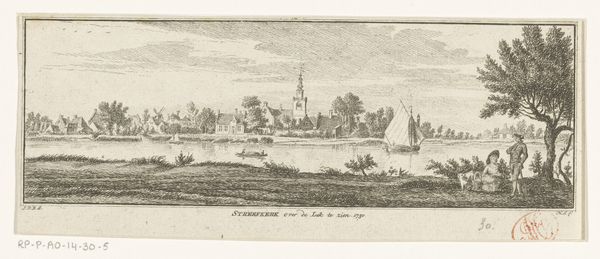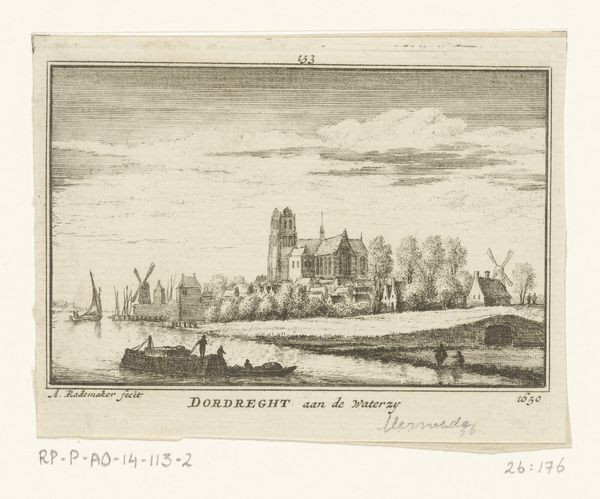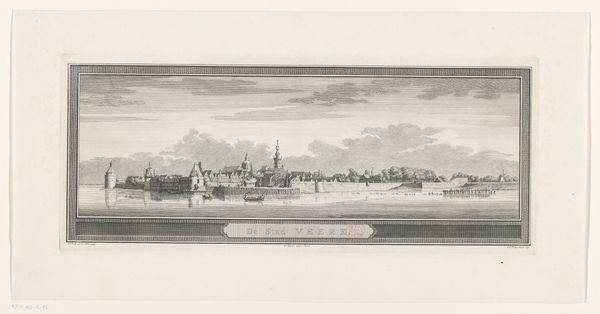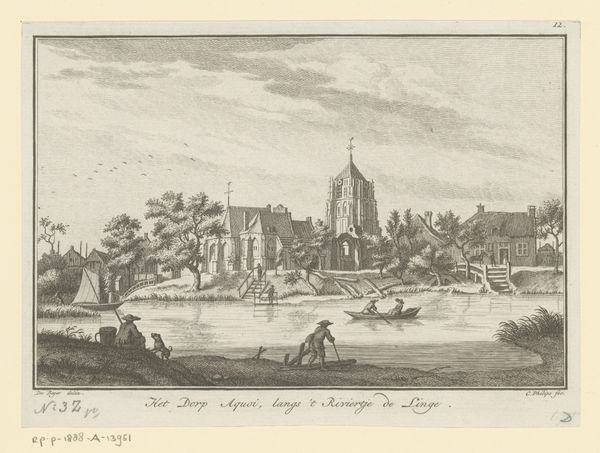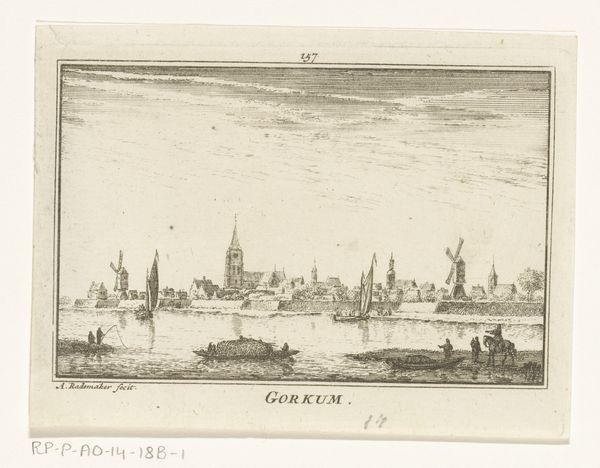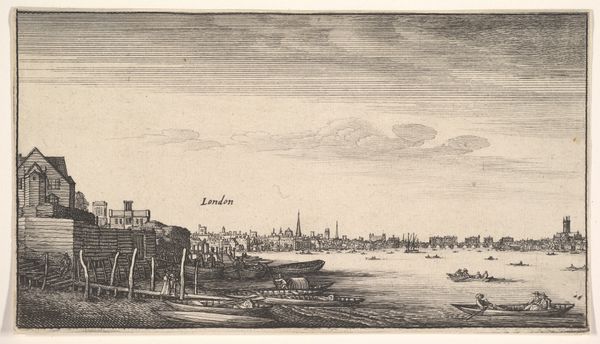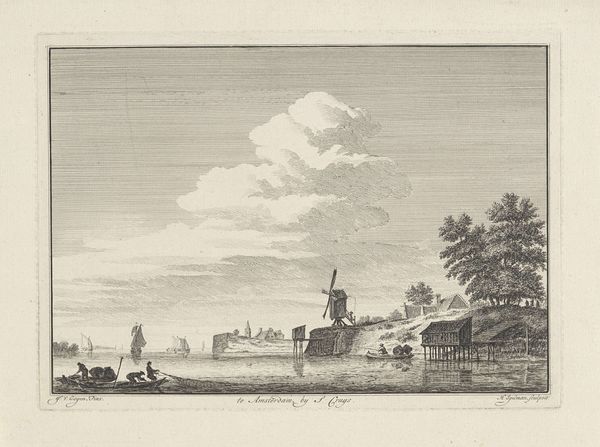
print, paper, engraving
#
dutch-golden-age
# print
#
landscape
#
paper
#
line
#
cityscape
#
engraving
#
realism
Dimensions: height 86 mm, width 110 mm
Copyright: Rijks Museum: Open Domain
Hendrik Spilman made this print of Arnhem from the river in 1742. The serene image presents a panoramic view of the Dutch city, complete with its iconic church tower and a windmill. In 18th-century Netherlands, topographical prints like this were more than just pretty pictures. They played a crucial role in shaping civic identity and promoting a sense of local pride. These images were often commissioned by city governments or wealthy patrons and distributed widely as symbols of urban prosperity and cultural achievement. Consider how the artist highlights the church and windmill, emblems of community and industry. By studying maps, municipal archives, and period publications, we can better understand the social and institutional context that gave rise to these seemingly straightforward depictions of place. The images are a reminder that the meaning of art is always contingent on its historical moment.
Comments
No comments
Be the first to comment and join the conversation on the ultimate creative platform.


